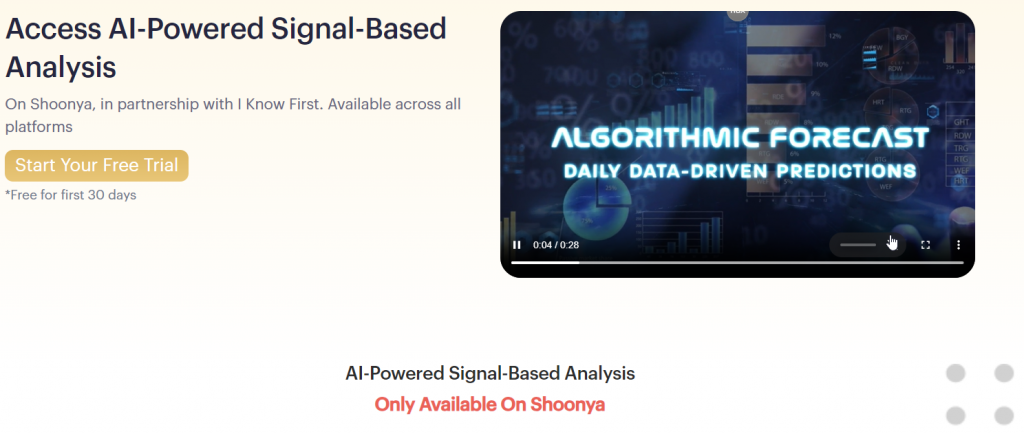20 Good Tips For Deciding On AI Stock Analysing Sites
20 Good Tips For Deciding On AI Stock Analysing Sites
Blog Article
Top 10 Tips To Evaluate The Strategy Customization Of Ai Trading Platforms
Strategy customization is a crucial characteristic of AI platform for predicting and analyzing stocks that allow users to customize the platform according to meet their particular trading needs, risk tolerance, and market conditions. A platform that offers many customization options can improve your trading performance. Here are 10 top suggestions for evaluating the customization options offered by these platforms.
1. Evaluate Pre-Built Strategy Templates
A variety of templates. Find out if the platform offers a broad variety of pre-built strategies for various types of trading (e.g. day trading, swing trading, or long-term investment).
User-friendliness: Consider the ease of use required to apply and modify these templates to meet your requirements.
Performance history: See whether the platform has historical performance statistics on the pre-built strategy.
2. Review the Custom Strategy Development
Drag-and-drop tools: Select platforms with drag-and-drop interfaces that allow you to easily create customized strategies.
Coding Options: If are a skilled user, ensure that the platform is able to support customized coding.
Flexibility - Make sure the platform you select permits you to define rules for entry and exit, as well as parameters for risk management, as well as other essential components of your strategic plan.
3. Check for Backtesting Capabilities
Data historical: See whether you have enough facts to back-test your strategies.
Customizable parameter: Make sure that you are able to alter parameters while backtesting (e.g. indicators, timeframes).
Performance metrics: Find out whether the platform provides specific performance metrics for backtested strategies (e.g. win rate, sharpe ratio, drawdown).
4. Evaluate Real-Time Strategy Testing
Paper trading: Ensure that the platform provides models for paper trading or simulation to test strategies in real-time without taking risks with capital.
Live testing - See if you can test strategies with tiny amounts to test how they perform.
Real-time adjustment: Determine whether it is feasible to change strategies in response to market conditions.
5. Assessment of Integration based on technical Indicators
Indicator library - Check whether a platform offers an extensive collection of indicators that are technical, including moving averages (e.g. RSI), MACD or RSI.
Custom indicators. Make sure you have the ability to create or use customized indicators as part of your strategy.
See if you are able to combine several indicators to make more complex strategies.
6. Check for Risk Management Tools
Stop-loss/take-profit: Ensure the platform allows you to set stop-loss and take-profit levels within your strategies.
Size of your position. Check whether you have established rules for the best way to handle your risk (e.g. an amount that is set or percentage of your portfolio).
Risk-reward ratio: Check whether the platform can set risk-reward ratios for specific strategies or trades.
7. Evaluate Multi-Asset Strategy Support
Asset classes: Make sure the platform supports strategies across multiple asset classes (e.g. ETFs, stocks Forex, ETFs).
Cross-asset strategy: See whether you can create strategies that include various asset classes (e.g. pairs trading and hedges, etc.).
Market coverage - Make sure that the platform covers the markets you are in (e.g. US and international markets, copyright, etc.).
8. Review Automation and Execution
Automated trading: Ensure that the platform can be capable of automating trading strategies based on predefined rules.
Order types: Find out if the platform supports various order types (e.g. market, limit, stop) to execute a strategy.
Latency: Determine if the platform can execute trades quickly, particularly for trading strategies that use high-frequency.
9. Make sure to check out the Strategy Optimization Tools
Optimization of parameters - Make sure that your platform comes with tools to optimize your strategy parameters.
Integration of machine learning: Find out whether the platform is integrated with machine learning to refine and improve strategies.
Scenario Analysis: Check if the platform supports testing strategies across various market scenarios (e.g. bull bear, bear or volatile).
Check out the User Feedback and Community Feedback
User reviews: Review user feedback to assess the platform's ability to customize strategies.
Community forums: Check whether the platform hosts an active community of users who are able to discuss and discuss customized strategies.
Support resources - Make sure that the platform includes tutorials and documentation for users to create and enhance strategies.
Bonus Tips
Trial period: Use the trial for free to try out the ability to customize your strategy.
Scalability is crucial. The platform needs to be able to handle strategies that get more complicated as your trading grows.
Support for customers: Check whether the platform provides assistance for issues related to strategy or concerns.
If you follow these guidelines to evaluate the strategy customization capabilities of AI trading platforms that predict and analyze stocks, ensuring you choose one that matches your objectives in trading and lets you apply and refine your strategies effectively. A platform with robust customization features can enable you to adjust to market conditions and improve the efficiency of your trading. Follow the top rated best ai copyright url for site advice including stock predictor, ai trading platform, stock predictor, ai investing app, using ai to trade stocks, ai investing app, best ai trading platform, best ai stocks, using ai to trade stocks, free ai trading bot and more.
Top 10 Ways To Assess The Reviews And Reputation Of Ai Stock Predicting/Analyzing Trading Platforms
Reviewing the reputation and reviews of AI-driven stock prediction and trading platforms is vital for ensuring trustworthiness, reliability and efficiency. Below are the top ten methods to analyze the reputation and reviews.
1. Check Independent Review Platforms
Read reviews of reliable platforms like G2, copyright, and Capterra.
Why independent platforms provide unbiased feedback from real users.
2. Analyze User Testimonials and Study Case Studies
Tip: Read user testimonials and case research on the platform's website or third-party sites.
Why: These metrics provide an insight into the performance in the real world and user satisfaction.
3. Review of Expert Opinions Industry Recognition
Tips: Find out whether the platform has been approved or reviewed by experts in the field, financial analysts, or reputable publications.
Why: Expert endorsements add credibility to the platform's claims.
4. Social Media Sentiment
TIP: Check the social media sites (e.g., Twitter, LinkedIn, Reddit) for comments from users and opinions about the platform.
Why: Social media provides unverified opinions and information about the platform's reputation.
5. Verify that the Regulatory Compliance is in place
Tips: Make sure the platform is in compliance with the financial regulations (e.g., SEC, FINRA) and privacy laws (e.g., GDPR).
What's the reason? Compliance ensures a platform's legal and ethical operation.
6. Transparency is key in performance metrics
Tip: Assess whether the platform offers transparent performance indicators (e.g. accuracy rates and ROI, results from backtesting).
Transparency is essential as it helps build trust and users can assess the performance of the system.
7. Be aware of the quality of service provided by customers.
Review the reviews for information on customer support and its effectiveness.
Why reliable support is crucial to resolve issues and ensuring a pleasant user experience.
8. Red Flags to Look for in Reviews
Tips: Watch out for complaints such as ineffective service or hidden charges.
Why: Consistently negative feedback can indicate problems on the platform.
9. Assess Community and User Engagement
TIP: Find out if the platform has an active user community (e.g. forums, forums Discord groups) and engages with users frequently.
Why: A solid community indicates satisfaction of users and continuous support.
10. Examine the track record of the company.
Review the company's history as well as the management team and its past performance within the financial technologies space.
Why: A track record of trustworthiness and knowledge increases the confidence in the platform.
Compare Multiple Platforms
Compare reviews and the reputations from different platforms to find the one that is best suited to your needs.
Utilize these suggestions to determine the credibility, reviews and ratings of AI stock trading and prediction platforms. Check out the most popular visit website on ai day trading for site tips including ai investing, ai bot for copyright trading, ai trading app, investing in ai stocks, stock ai, ai trading app, ai for stock trading, trading ai, ai coin price prediction, artificial intelligence stocks and more.